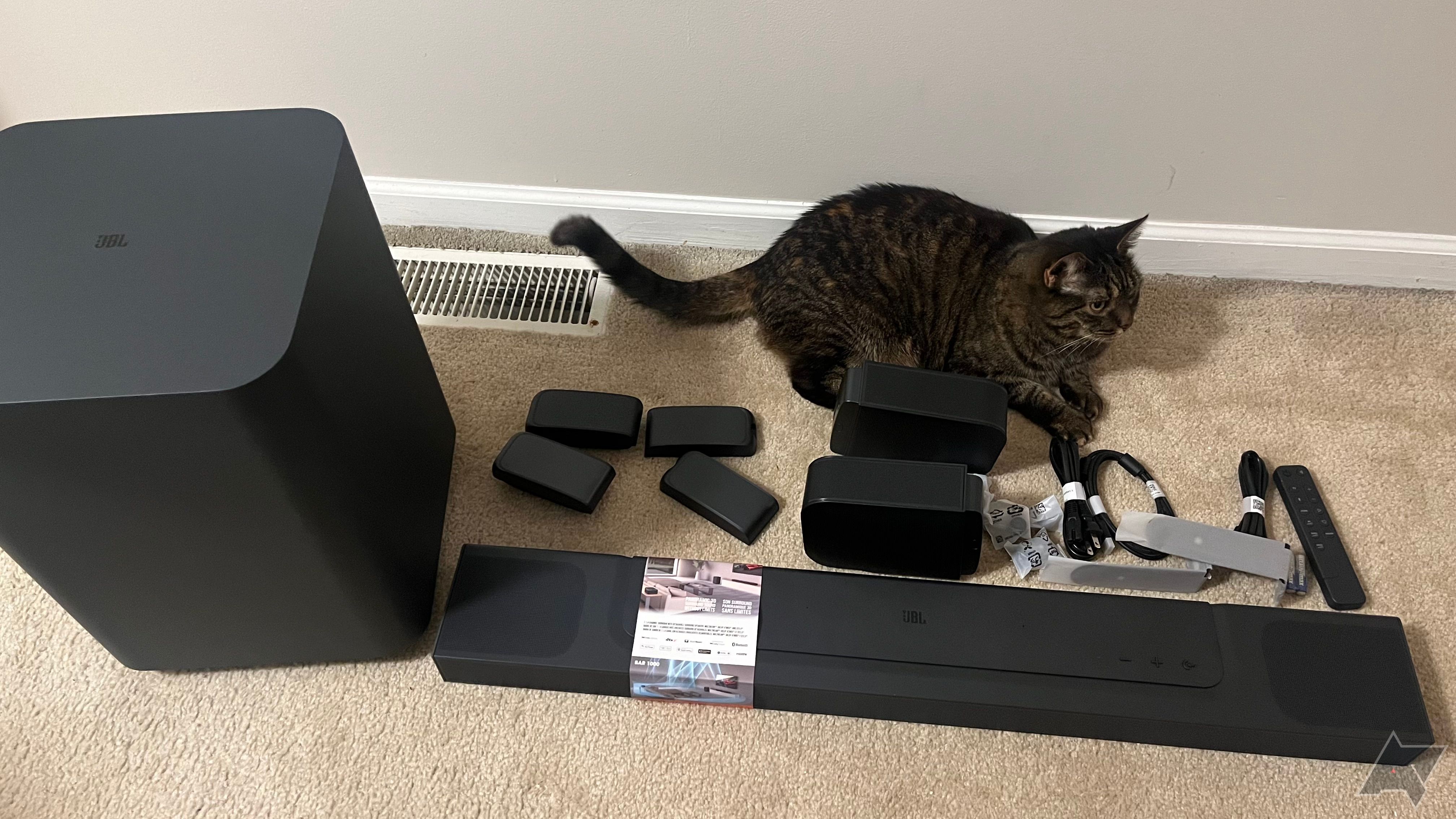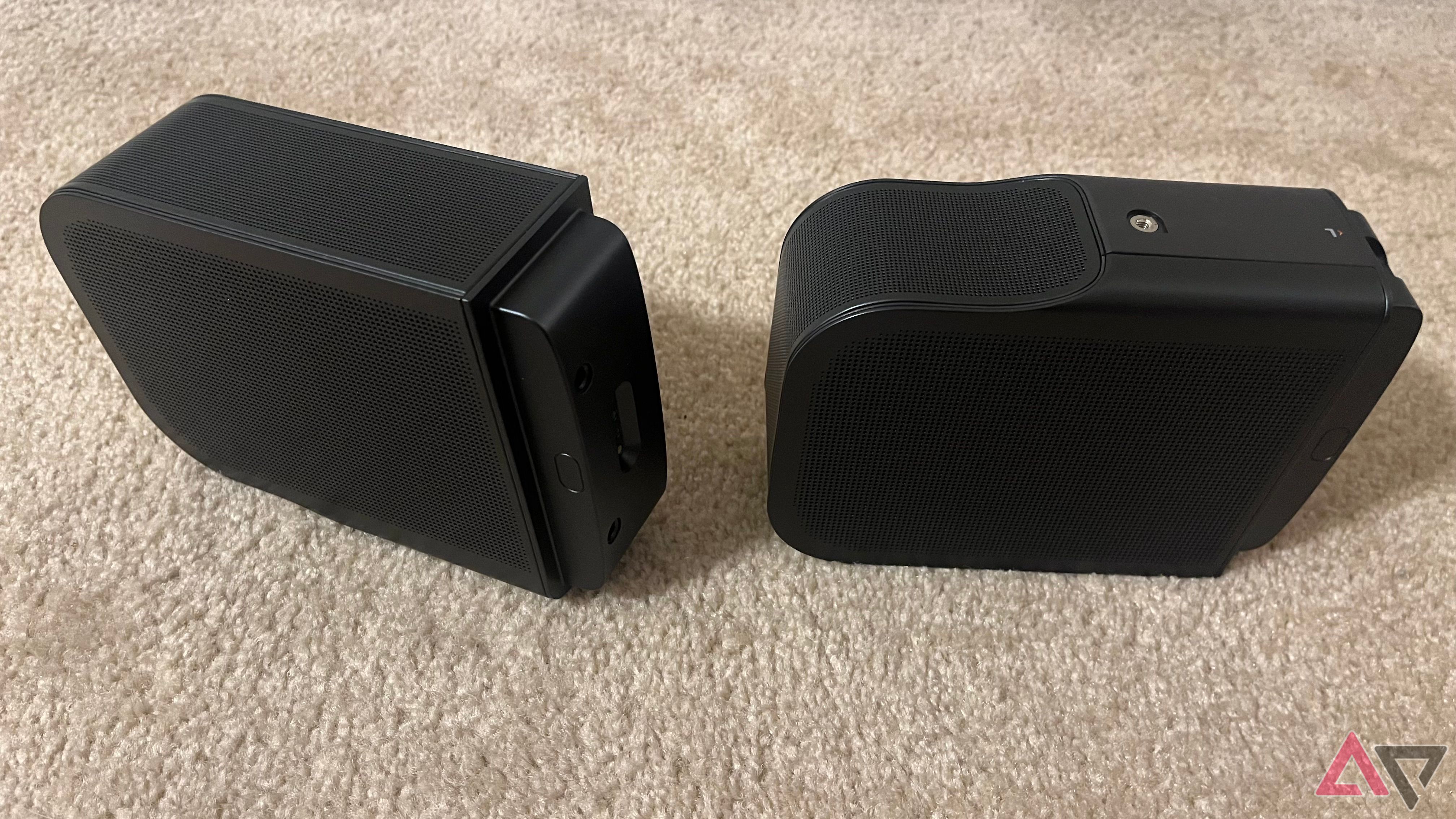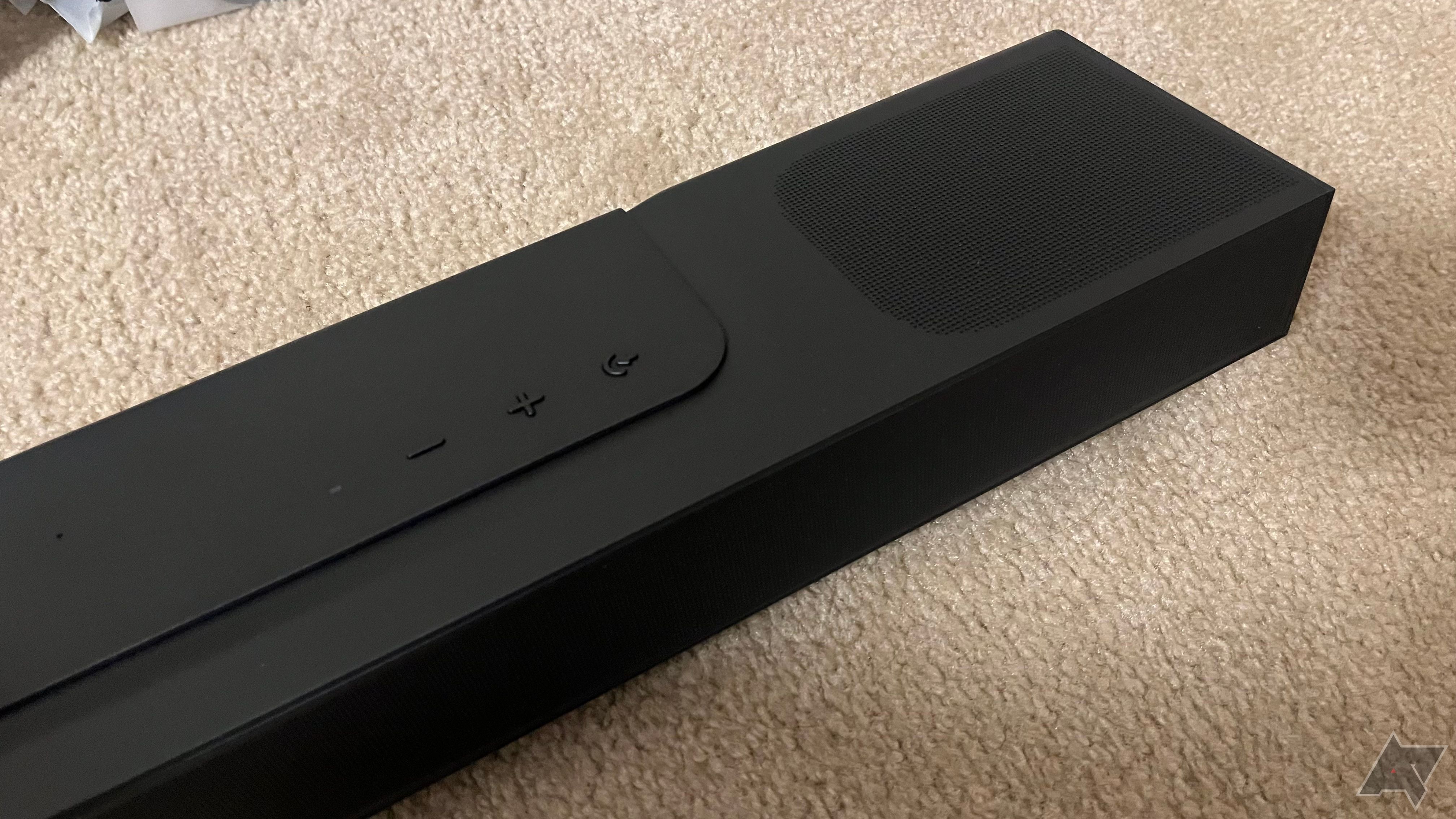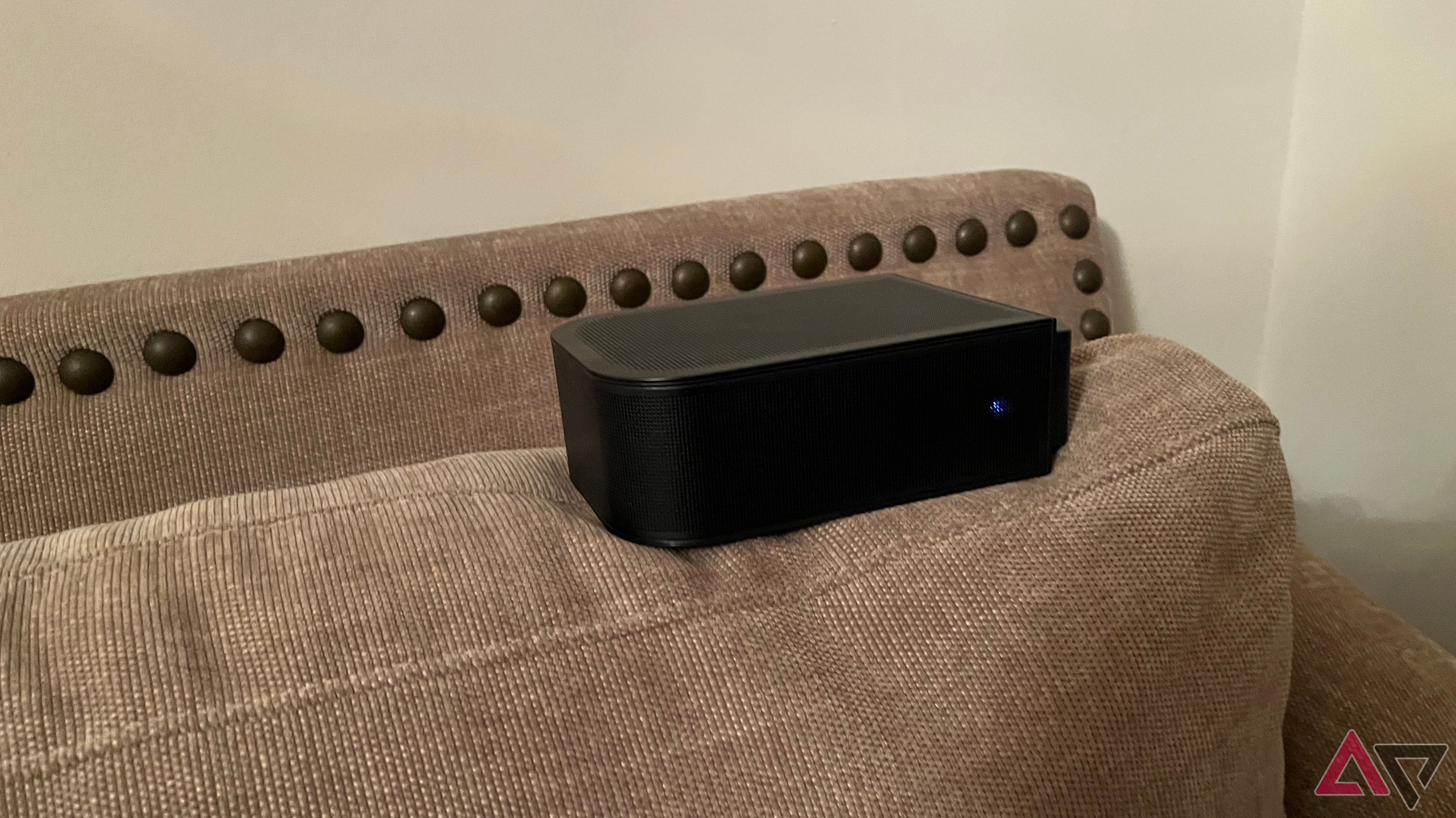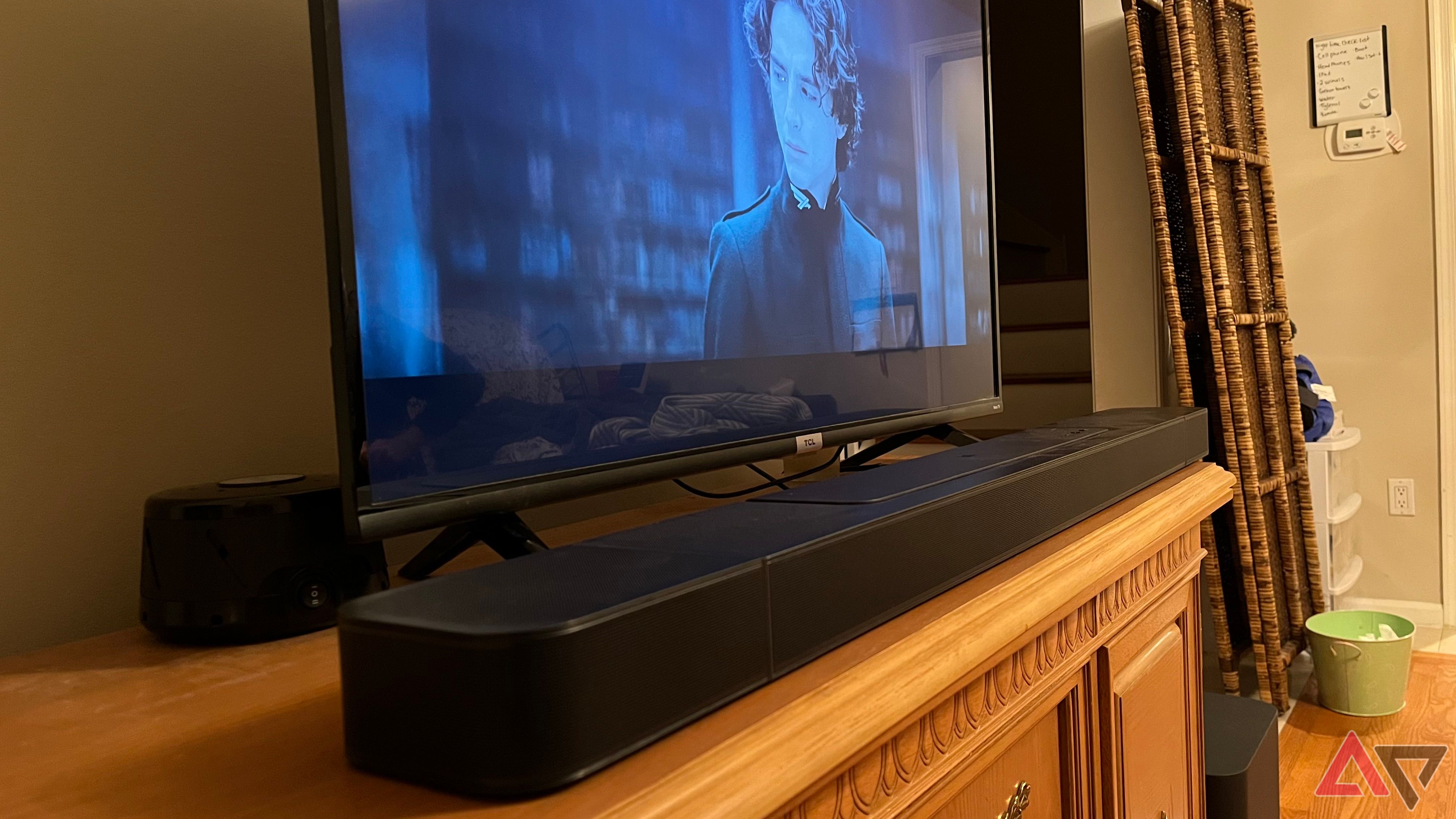There are a lot of soundbars to choose from, and many of them are pretty good. But most of them don’t come with the ability to turn into a 7.1.4 system as the JBL Bar 1000 can. Part of its charm is the ability to add both surround sound and Dolby Atmos, aka spatial audio, to the mix at a price that, while high, is appropriate.
Is it among the best soundbars out there? I’ll leave that for you to decide. However, as our score reflects, the JBL Bar 1000 gets my hearty recommendation. There are a few issues with it, particularly its limited EQ controls, as we’ll discuss, but there are no dealbreakers as long as you can afford the high price tag.
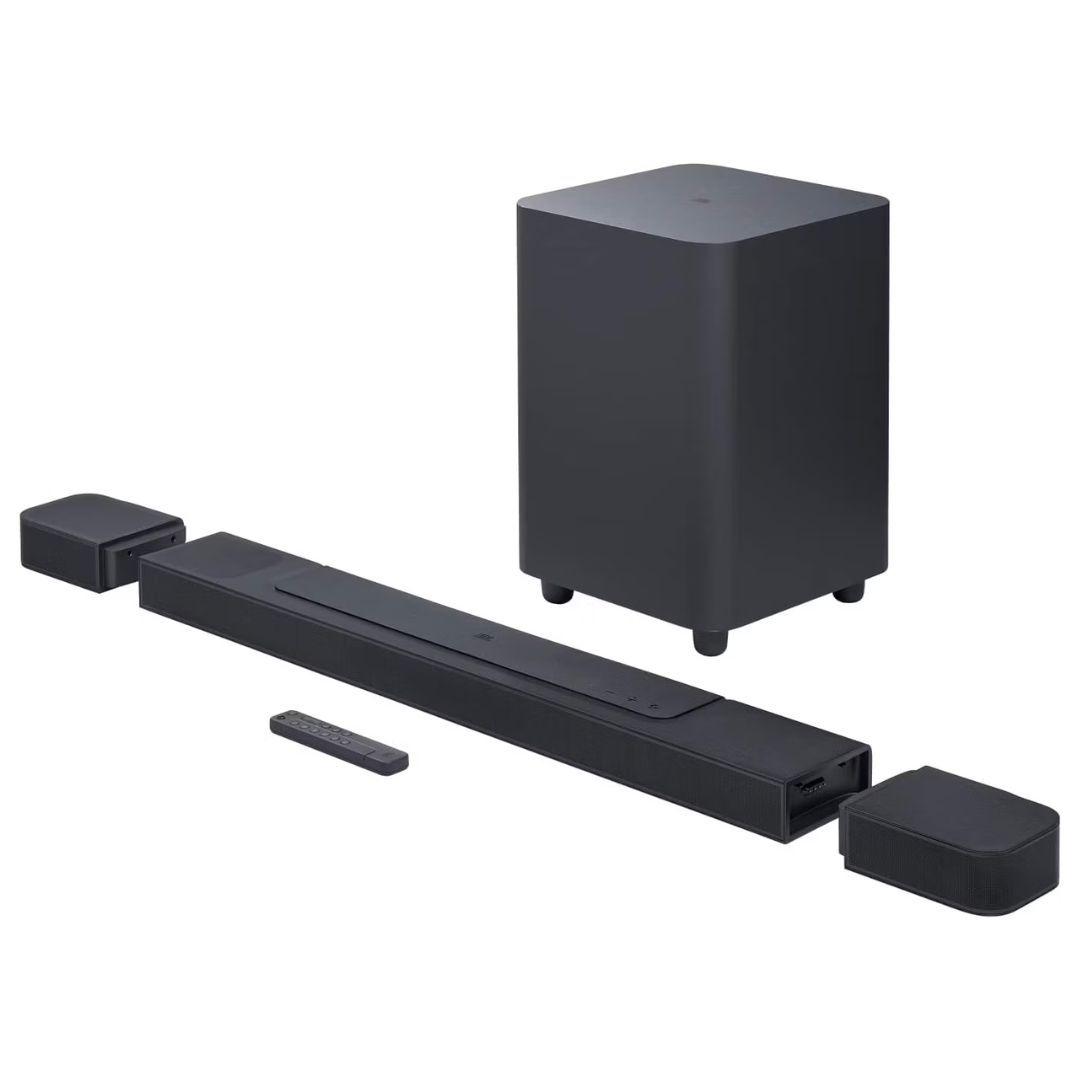

JBL Bar 1000
Staff Pick
The JBL Bar 1000 is an impressive soundbar. It has surround sound and Dolby Atmos on offer, and the rear speakers that provide the surround portion of the sound can easily be placed back on the soundbar for a more traditional setup, not to mention charge them back up. Additionally, you get three additional HDMI passthrough ports and an eArc if you’re running out of room on the back of your TV. Of course, the EQ is limited, as is the Dolby Atmos, and it’s certainly not cheap. However, it’s worth it since it sounds pretty darn good.
- Connectivity
- Bluetooth, HDMI, optical
- Ports
- 3x HDMI, HDMI eARC, optical, USB
- Power
- 880 watts
- Subwoofer Output
- 300 watts
- Speaker Arrangement
- 7.1.4
- Dimensions
- soundbar: 1194 x 56 x 125mm / 47 x 2.2 x 4.9 inches, subwoofer: 305 x 440.4 x 305 mm / 12 x 17.3 x 12 inches
- Buttons
- Power / Input, Volume Up, Volume Down
- Drivers
- soundbar: 5x (46×90)mm racetrack drivers, 3x 0.75″ (20mm) tweeters, 2x 2.75″ (70mm) up-firing full-range drivers, rear speakers: 0.75″ (20mm) tweeters, 2.75″ (70mm) up-firing full-range drivers, subwoofer: 10” (260mm)
- Big 7.1.4 sound
- Can transform between surround sound and regular soundbar setup
- Adds extra ports!
- Feature-filled including calibration to current room
- Somewhat expensive
- Dolby Atmos a bit subtle
- EQ controls are fairly limited
Price and availability
JBL often runs sales on their stock, so you might get lucky and find the JBL Bar 1000 for cheaper than its usual price tag. However, it typically retails for $1,200. It’s not a surprising price because it comes with a massive subwoofer, two detachable rear speakers, and Dolby Atmos. Still, that’s above many people’s budgets when considering ways to upgrade their TV’s audio.
Design and hardware
Magnetic docking rear speakers add flexibility
The JBL Bar 1000 is not a small soundbar. Measuring 47 inches in length, almost 35 without the removable speakers, it’s going to occupy plenty of space in your setup. This is not a soundbar meant for those with a cramped living situation. Instead, this is a slightly more compact solution to a regular surround sound speaker system. After all, it’s still only 2.2 inches tall and a little under five inches in depth.
More interestingly, the rear speakers it comes with are removable, meaning that they magnetically clip onto the sides of the JBL Bar 1000 when you don’t care about surround sound (or need to charge the speakers, as this is how you get them fully juiced up).
And when you want surround sound, you remove them and place them in the desired location. For instance, I put them on top of my sofa since I don’t have any speaker stands or furniture to rest them on. Since I don’t need to plug them in, it’s not the problem it might be with other surround sound systems, as I don’t need to figure out a permanent location for them.
Also, both the soundbar and the rear speakers have upward-facing speakers, indicated by the 4 in the 7.1.4 setup, to provide Dolby Atmos or spatial audio. So, the JBL Bar 1000 offers spatial audio on every channel.
Before we forget, there is a pretty substantial subwoofer as well that connects to the soundbar wirelessly. It only needs to be connected to a power supply.
The additional ports are among the other great physical additions beyond the surround and spatial audio. Besides one optical and USB port, not to mention Bluetooth connectivity, there’s one HDMI eArc port, which most people will use as they’ll have their streaming devices, Blu-ray players, and consoles plugged directly into the TV.
However, there are three additional HDMI inputs on the soundbar itself. If you’ve run out of ports on your TV, you can plug whatever source – I used an Amazon Fire TV Stick – directly into the soundbar and then select the input through the soundbar or remote.
Lastly, as expected, the soundbar comes with a remote. It’s not particularly deep, but it does what it should. You can change the overall volume, surround and spatial audio volumes, subwoofer volume, and inputs.
Features and app
Feature-rich but limited EQ
While surround sound and Dolby Atmos are the main attractions feature-wise on the JBL Bar 1000, we’ll address their quality in the next section. For now, I want to discuss the JBL One app.
Since the controls on the soundbar are limited to volume up, volume down, and a power/input button, and the remote has some basic controls, the JBL One app is going to be a little more comprehensive.
However, the emphasis is on “a little” as the JBL Bar 1000 is held back, just like the JBL Authentics 300 I recently reviewed. Mainly, the EQ settings have a Low, Mid, and High band that you can boost or cut. Most software-based EQs are at least five, if not ten, bands, with some of them being parametric. Hopefully, JBL will improve upon that moving forward.
The app lets you create a “moment,” which is a selectable preset, so you don’t have to change EQ settings, rear speaker/spatial audio levels, etc. It’s a nice feature for those who like to fine-tune things once and then press a button to recall those settings.
You can also set up Wi-Fi streaming with some apps like Spotify. Since I use Deezer as my main streaming service, I could use AirPlay and Bluetooth to stream directly to the soundbar when listening to music. I prefer using AirPlay as I can still use my phone simultaneously without all the audio going through the soundbar. Alexa Multi-Room and Chromecast built-in are also available, though I wasn’t able to test those.
Probably the best part of the app, however, is that you can press a button there once you’ve placed your rear speakers called “calibrate,” that will calibrate the setup to the room that you’re in.
Performance and audio quality
Loud, proud, with surround sound
Since the JBL Bar 1000 pumps out 440 watts with an additional 300 watts from the subwoofer, there’s more than enough volume for just about any home theater situation. And, since there are five 1.8 x 3.5-inch racetrack drivers, three 0.75-inch tweeters, and two upward-facing 2.75-inch drivers in the soundbar (each rear speaker has a tweeter and upward-facing driver of the same size), the frequency range is pretty full.
Even though this is a $1,000+ system, you won’t get audiophile-level sound. That said, it does sound good. There’s plenty of bass on hand, thanks to that massive subwoofer. The mid-range is nice and full if a tad too prominent, so I would have loved more control over the EQ.
And the high-end is balanced, though it won’t blow you away with detail or resolution. In essence, for a consumer product, it sounds great. If you’re looking for audiophile audio, you can get better audio at around the same price but will have to forgo the surround sound and spatial audio.
Speaking of, the surround sound is also very good. I appreciate that the rear speakers can be put back on the soundbar to charge back up/get out of the way. The spatial audio adds some dimensionality, but is fairly subtle. I do wish it was a bit more dramatic than it is. I even set the soundbar up with two different TVs to make sure it wasn’t some strange interaction with my primary set, but I had the same experience across different TVs.
The competition
There are plenty of other soundbars with surround sound built in. While some are the same price or more, you can find some cheaper, such as the Vizio M-Series 5.1.2 Soundbar, priced at $499.99. Of course, it’s not quite as robust, and the speakers are not wireless. It’s also a bit heavier in the mid-range and only has 200 watts of power.
As mentioned, many of the best options with surround sound will cost about the same or more. The Samsung HW-Q800C also costs about $1,000 and can integrate pretty well with Samsung TVs (and also has Dolby Atmos support).
Should you buy it?
While pricey, JBL regularly discounts its products, including the JBL Bar 1000, so you can wait for a sale. At the time of writing, it’s priced at $799.95. With that in mind, this is an easy soundbar to recommend, especially if you can get it at a lower price.
The JBL Bar 1000 has a lot of power on hand, sounds very good, including its surround sound, and has plenty of features. The Dolby Atmos is a bit more subtle than I would like, while the EQ controls are about as underwhelming.
But, the soundbar expands the number of devices you can plug into the TV, not to mention that you can calibrate it to your room. I also appreciate that the rear speakers can be placed on the soundbar for safekeeping or charging. All in all, this is a really good soundbar.


JBL Bar 1000
Staff pick
The JBL Bar 1000 is an impressive soundbar. It has surround sound and Dolby Atmos on offer, and the rear speakers that provide the surround portion of the sound can easily be placed back on the soundbar for a more traditional setup, not to mention charge them back up. Additionally, you get three additional HDMI passthrough ports and an eArc if you’re running out of room on the back of your TV. Of course, the EQ is limited, as is the Dolby Atmos, and it’s certainly not cheap. However, it’s worth it since it sounds pretty darn good.
Source link

